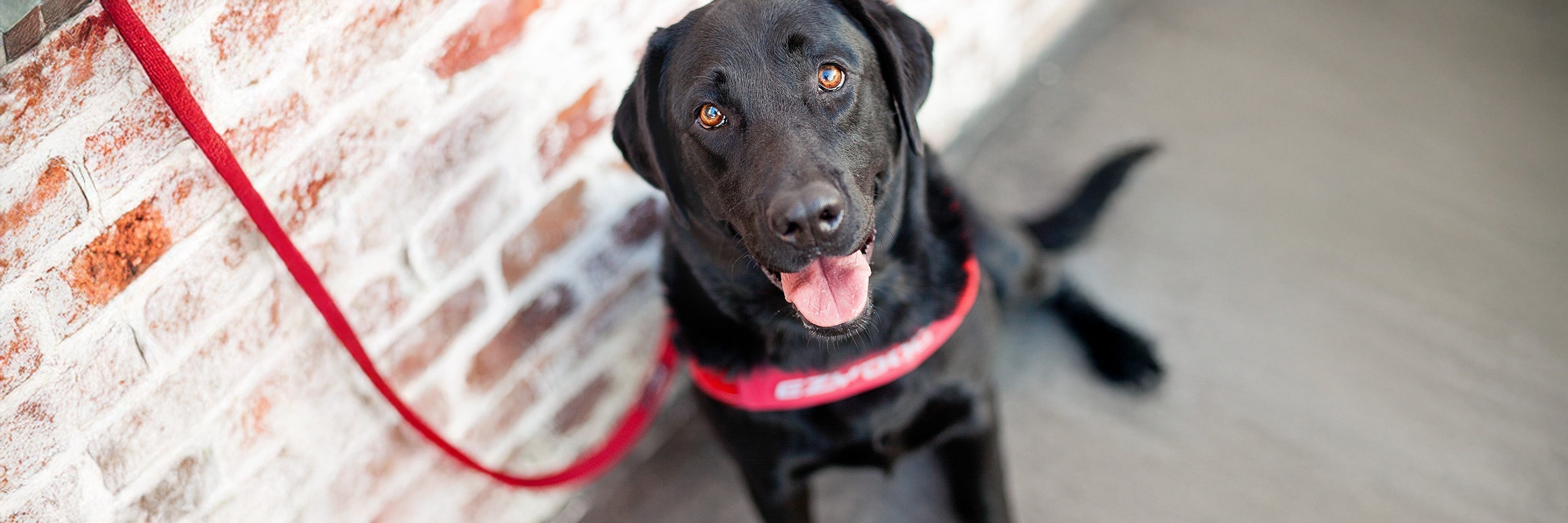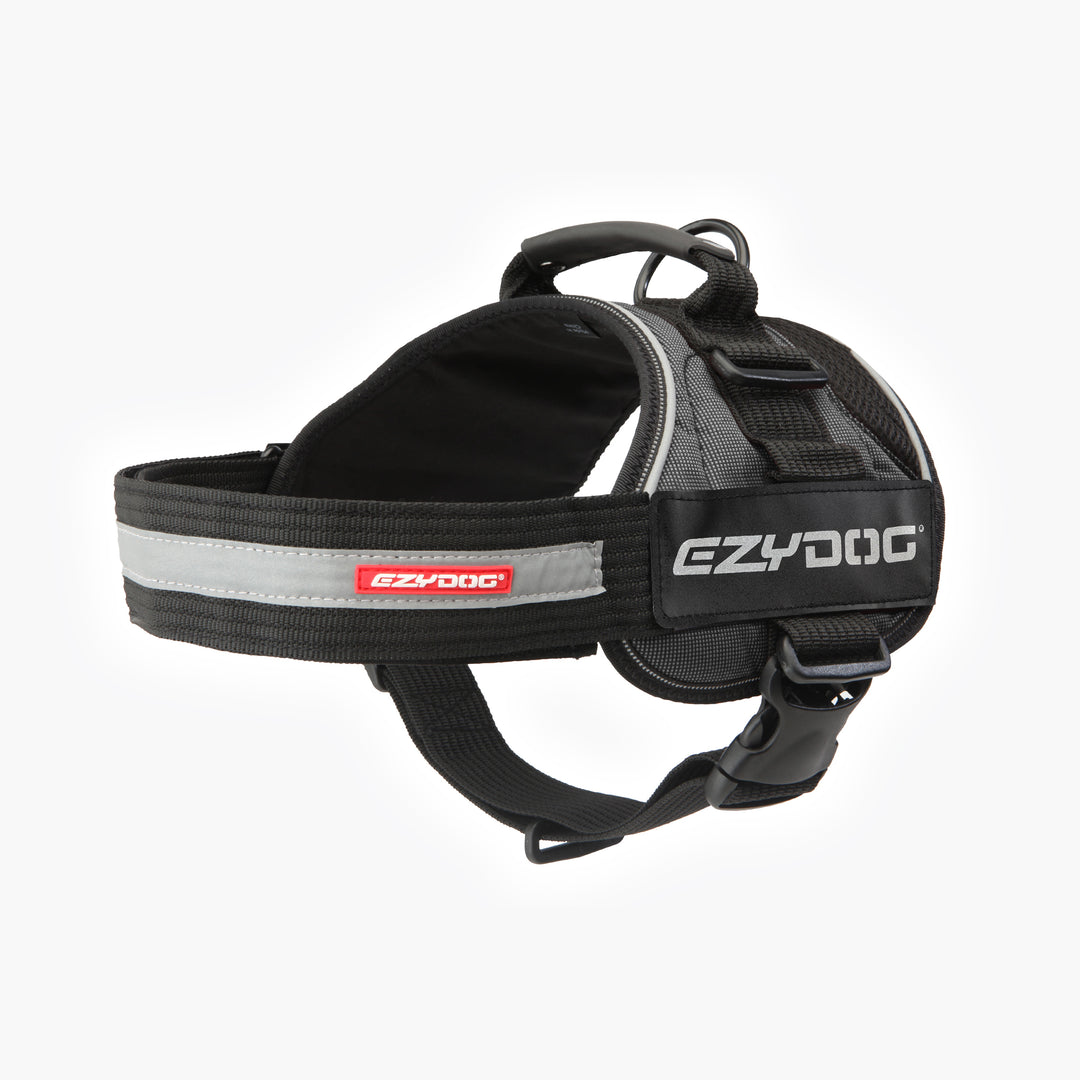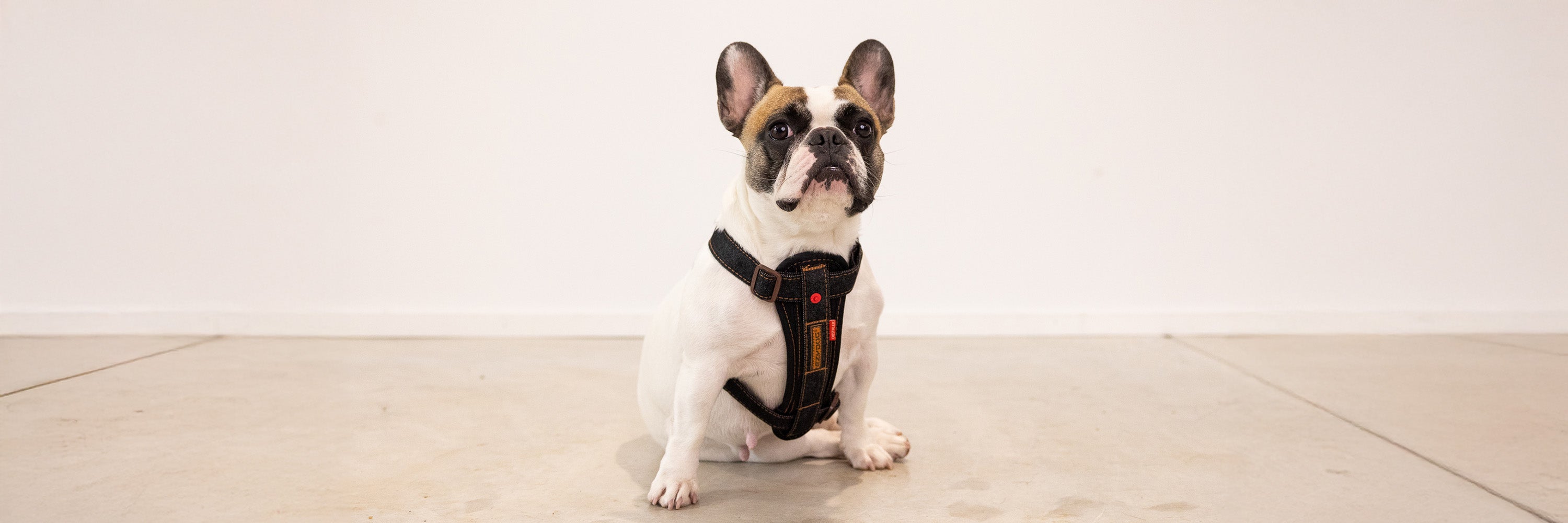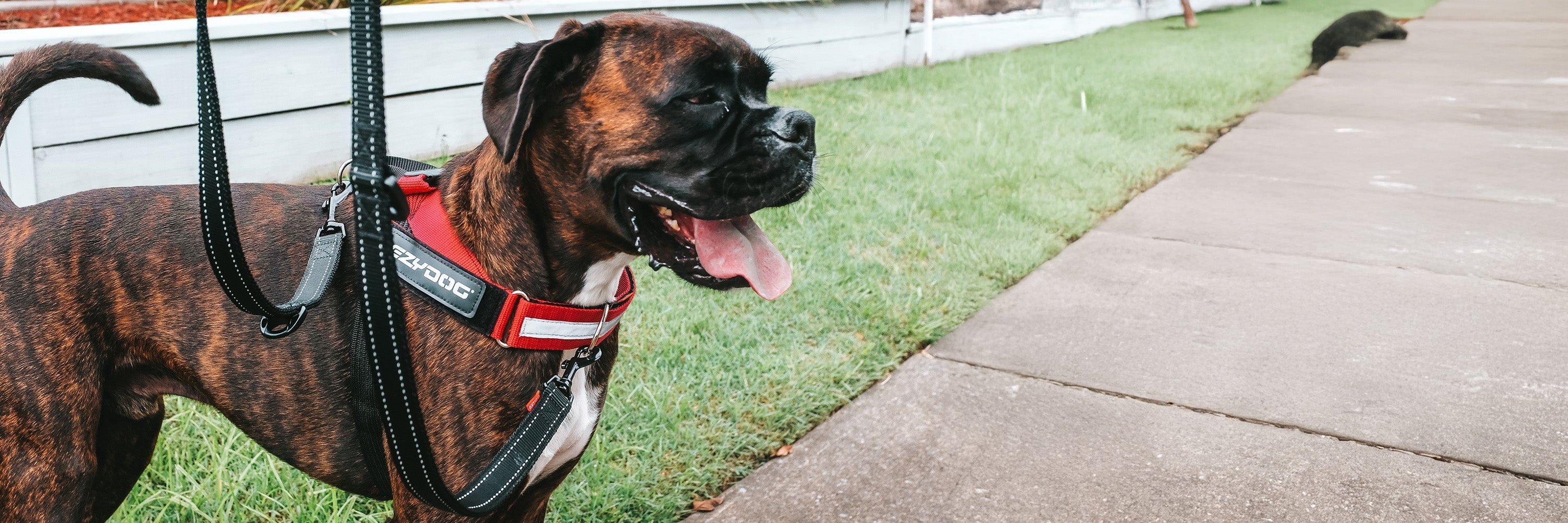
Best Dog Harness for Labrador – Comfortable & Secure Fit for Your Energetic Mate
As a Labrador owner, I know what it’s like to be dragged down the footpath by a dog that thinks he’s on a sled team. Labs are one of the most popular breeds in Australia, but their boundless enthusiasm and muscular build mean they’re not always easy to walk on a lead. Their broad chests and strong necks also make them prone to neck injuries when using traditional collars. Choosing the right harness is one of the best investments you can make for both comfort and control.
Why harnesses are essential for Labradors
Labradors are built for action: males typically weigh 65–80 lb (29–36 kg) and females 55–70 lb (25–32 kg), reaching full size by twelve months. That strength often translates into pulling on walks. A well‑fitted harness distributes pressure evenly across the chest, protecting the vulnerable neck and spine and helping you manage their eager pulling.
What Makes a Perfect Labrador Harness?
When I’m shopping for my own Lab, there are a few non‑negotiables. The perfect harness should combine control, comfort and durability. Here are the features I look for:
-
Chest support – A harness should distribute pressure across the chest, preventing strain on the delicate neck and trachea. For Labradors with an “opposition reflex”, front‑clip options are especially helpful because they redirect pulling towards you.
-
Adjustable fit – Every Lab is built differently. I prefer designs with multiple points of adjustment so I can fine‑tune the fit as my dog grows or gains weight.
-
Lightweight construction – Labs love long bushwalks and beach runs. Lightweight materials balance security and comfort during extended adventures.
-
Soft padding – Padded chest plates or lined straps prevent chafing and rubbing, keeping your dog comfortable when the walk turns into a tug‑of‑war.
-
Easy on/off – Quick‑release buckles or one‑click mechanisms minimise handling time, reducing stress for anxious dogs and impatience for owners.
-
Visibility – Reflective stitching or bright colours enhance visibility during dusk or dawn walks. Safety is just as important as style.
Key Reasons to Choose a Harness
-
Better control – Harnesses give you more leverage when your dog lunges or pulls, reducing the risk of falls or injuries.
-
Reduced injury risk – By spreading pressure across the body, harnesses protect the neck, spine and eyes.
-
Escape prevention – Properly fitted harnesses are harder for dogs to wriggle out of, keeping your Labrador secure.
-
Versatility – Many harnesses double as car restraints or have attachment points for accessories like saddlebags and safety lights.
Top EzyDog Harnesses for Labradors
To take the guesswork out of shopping, I’ve hand‑picked three harnesses from our non‑pull harness collection. Each one has been tested on my own energetic Lab and offers something unique.

Essential Chest Plate Harness
Everyday walking, dogs who pull or need extra chest support.

Quick Fit Harness
Dogs that dislike step‑in harnesses; quick on/off convenience.

Convert Dog Harness
Active Labradors, hiking, camping and dogs needing extra control.
Looking for more options? Check out our full range of dog harnesses and matching dog leads to complete your walking kit.
Perfect Fit Guide for Labradors
Getting the right fit is the most important factor in harness comfort and safety. Measure your Lab’s girth, neck and body length, and if your dog sits between sizes, our friendly customer service team can help you decide – just reach out via chat or book a fitting consult.
Measurement Steps
-
Chest measurement (girth) – Wrap a measuring tape around the broadest part of your Lab’s chest, just behind the front legs. Add a centimetre or two for wiggle room.
-
Neck measurement – Measure around the base of the neck where a collar would sit and add a little extra for comfort.
-
Body length – Measure from the base of the neck to the base of the tail. This ensures the strap sits correctly along the spine if your harness or jacket uses a body length measurement.
-
Weight consideration – Always consider your dog’s weight alongside measurements for the best fit. Adult Labradors generally weigh between 25–36 kg, so most will wear a large or extra‑large harness.
Size Chart for Labradors
|
Size |
Chest (cm) |
Weight (kg) |
|
M |
46 – 63 |
23 – 32 |
|
L |
63 – 84 |
32 – 48 |
|
XL |
84 – 100 |
48 + |
Pro tip: If your Lab falls between sizes, it’s generally best to choose the larger size for comfort. Remember that puppies grow quickly – adjust the harness frequently to avoid rubbing or slipping.
Harness Care & Maintenance
Keeping your Lab’s harness in top condition helps it last longer and ensures your dog stays comfortable. Here’s how I take care of mine:
Cleaning instructions
-
Hand wash with mild soap and warm water.
-
Machine washable on gentle cycle after removing metal components.
-
Air dry completely before next use.
-
Never use bleach or harsh chemicals.
Regular maintenance
-
Inspect buckles and stitching monthly for wear.
-
Replace fraying or safety components as needed.
-
Store in a dry location when not in use.
Training Tips for Lead Manners
Even the best harness won’t stop pulling on its own – training is key. Here’s how I taught my Labrador to walk politely:
-
Understand the opposition reflex – Dogs naturally lean into pressure. A front‑clip harness helps redirect your dog towards you and reduces pulling.
-
Stop and stand still – If your Lab pulls ahead, stop walking immediately. Don’t move until there’s slack in the lead, then reward the loose lead with forward movement.
-
Add interest to your walks – Incorporate simple exercises like “sit”, “touch” or “watch me” and reward your dog with treats or praise. Engaging your dog’s brain keeps them focused on you instead of the environment.
-
Practice in low‑distraction areas – Start training in a quiet backyard or park and gradually increase the level of distraction as your Lab improves.
-
Be patient and consistent – Training takes time, especially with an enthusiastic breed like the Labrador. Stay calm, reward progress and avoid yanking on the lead.
Common Mistakes When Fitting a Harness
After years of fitting harnesses, I’ve seen the same errors crop up again and again. Avoid these pitfalls:
-
Too loose or too tight – If you can’t slide two fingers under the straps, the harness may rub and cause sores; if you can fit more than two fingers, your Lab may wriggle free.
-
Straps over the shoulders – Straight straps that run horizontally across the chest can restrict shoulder movement and alter your dog’s gait. Choose a Y‑shaped design that allows full range of motion.
-
Incorrect girth placement – The girth strap should sit behind the rib cage but not into the soft belly, and the neck opening should sit on the sternum rather than up near the throat.
-
Ignoring growth or weight changes – Labradors can fluctuate in weight throughout the year and puppies grow rapidly. Check the fit regularly and adjust as needed.
-
Expecting a harness to fix pulling on its own – Even the best harness needs to be paired with consistent training.
Essential Accessories for Labrador Adventurers
A good harness is just the beginning. Over the years I’ve discovered that the right accessories make outings safer, more fun and far less messy. Here’s my go‑to kit, grouped by activity. All links below go to our Australian shop to help you find exactly what you need.
Walking
-
Dog leads – Pair your harness with a sturdy lead. I love our Zero Shock™ lead for absorbing sudden lunges.
-
Dog harnesses – Explore our full range for training, daily walks or specific activities.
Style
-
Designer dog collars – For times when you want your Lab to look extra sharp.
-
Leather collars – A classic option that pairs beautifully with a harness.
Training
-
Treat bags – Keep high‑value treats handy to reward good behaviour during walks.
-
Dog training gear – From clickers to long lines, the right tools can speed up your training progress.
Travel
-
Dog car seat belts – Turn your harness into a car restraint for safer road trips.
-
Bundles – Save by combining a harness, lead and collar in one purchase.
Climate Gear
-
Coats – Keep your Lab warm and dry on chilly mornings.
-
Summer collection – Lightweight vests and cooling mats help your dog stay comfortable in the Aussie heat.
Personalised Options
-
Personalised dog harnesses – Add your dog’s name and make their gear unique.
-
Customise – From patches to colours, design a harness that suits your style.
Play & Clean‑Up
-
Toys – Durable fetch toys and tuggers keep your Lab entertained after your walk.
-
Clean‑up – Poop‑bag holders, wipes and mats make it easy to leave no trace.
Frequently Asked Questions
Why shouldn’t I use a collar on my Labrador?
Labradors are strong dogs prone to neck and trachea injuries when pressure is focused on the throat. A harness distributes pressure evenly across the chest and shoulders, reducing risk while giving you more control.
How tight should a harness be on a Labrador?
You should be able to fit two fingers comfortably between the harness and your dog’s body. Too loose and your dog may slip out; too tight and it could cause chafing or restrict breathing.
Can my Labrador wear a harness all the time?
It’s best to remove the harness when your Lab is unsupervised or resting. Prolonged wear can cause rubbing or hot spots. Only leave it on during walks, car rides, or when your dog needs to be secured.
My Lab pulls on walks. Which harness helps with this?
Our Chest Plate Harness and Convert Dog Harness both feature front‑clip options that help discourage pulling by redirecting your dog towards you. However, proper loose‑lead training is equally important for long‑term success.
How do I get my Labrador used to wearing a harness?
Start by letting your dog see and sniff the harness. Put it on for short periods indoors with treats and positive reinforcement. Gradually increase wearing time and associate it with positive experiences like walks or treats.
The Bottom Line
Choosing the right harness for your Labrador is one of the most important decisions you’ll make for their long‑term health and comfort. Labs are powerful and energetic dogs; using a harness helps prevent injuries, gives you better control, and makes walks more enjoyable. From my experience, the Essential Chest Plate Harness stands out as the best overall choice thanks to its support, comfort and versatility. For quick on/off convenience, the Quick Fit Harness is hard to beat. Active Labradors will benefit from the Convert Dog Harness, which offers extra control and storage on long adventures.
Remember, the best harness for your Lab fits properly, is comfortable, and gives you peace of mind on every outing. Measure your dog accurately, introduce the harness gradually, and maintain it well. Your Labrador’s wagging tail will tell you it was worth it!





Leave a comment
This site is protected by hCaptcha and the hCaptcha Privacy Policy and Terms of Service apply.